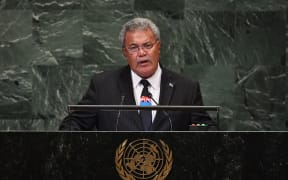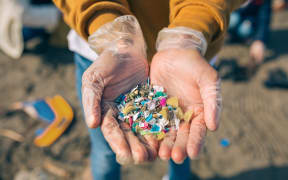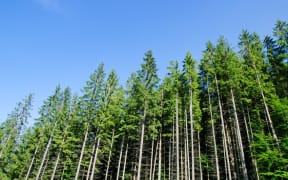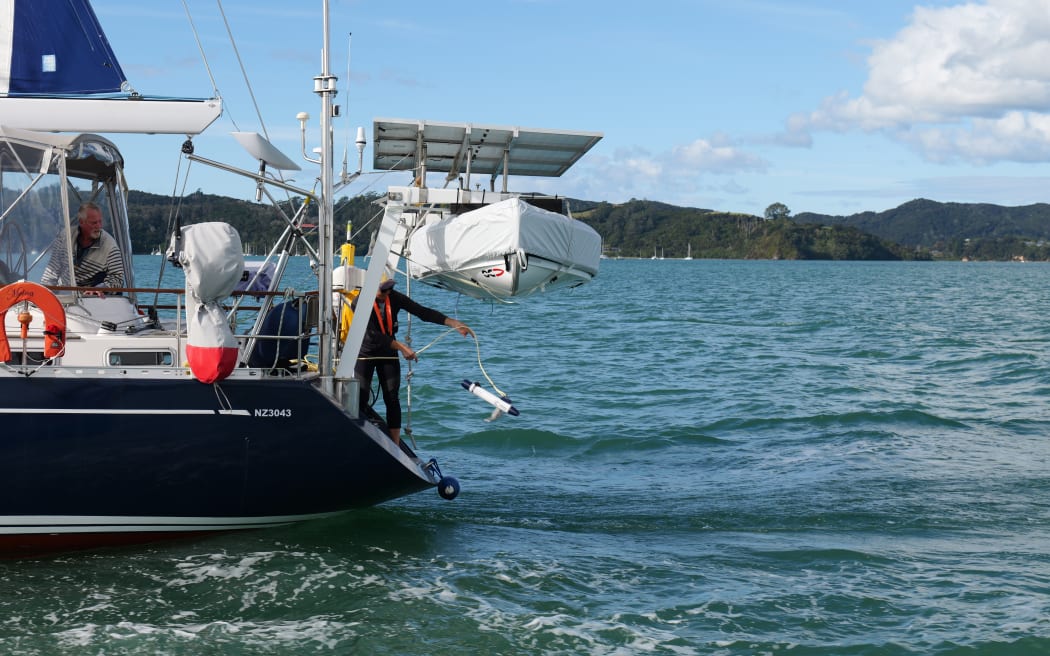
New Zealand Geographic and the Cawthron Institute have launched Citizens of the Sea, which aims to map the health and biodiversity of the Pacific at a larger scale than before. Deploying the TorpeDNA device to gather environmental data samples. Photo: Citizens of the Sea
A new project is collecting three types of information to help fill an existing gap of Pacific Ocean data.
New Zealand Geographic and the Cawthron Institute have launched Citizens of the Sea, which aims to map the health and biodiversity of the Pacific at a larger scale than before by partnering with sailors to collect it.
Cawthron's Xavier Pochon said they have technology for e-DNA, biophysical sensors, and 3-D reconstruction of corals.
Pochon said they hope the project will aid communities in the Pacific in a big way.
"It's incredibly important for island nations to understand the state of their biodiversity and health," he said.
Pochon said he heard last week there is another global bleaching event.
"This is very, very terrifying news in a way because it is happening in higher frequency.
"Coral reefs are essential for island nations... to protect the coastlines, to maintain rich and biodiverse habitats, and that bring fish and people feed on them, etcetera.
"It's really essential that we get a much better understanding of the health status of this ecosystem."
He said they will share the data with the sailors in a simple way, and will also take the opportunity to engage with local communities in the region, "so that we can get really a nice exchange of knowledge, both traditional and modern knowledge".
"In terms of community engagements, on island nations in the tropics, this is really something that's at the heart of the project."
Pochon's specialty is e-DNA, which refers to the DNA traces, or genetic material, organisms leave behind.
"This is done through expression or secretion - like mucus on a fish or fish scale that are being released; feces and urine that are constantly being released in the environment," he said.
"We now have the capacity, the ability, to capture this e-DNA from a few litres of seawater, and we can concentrate it back in the lab.
"We can then read it using DNA sequencing. In a process that's called meta barcoding."
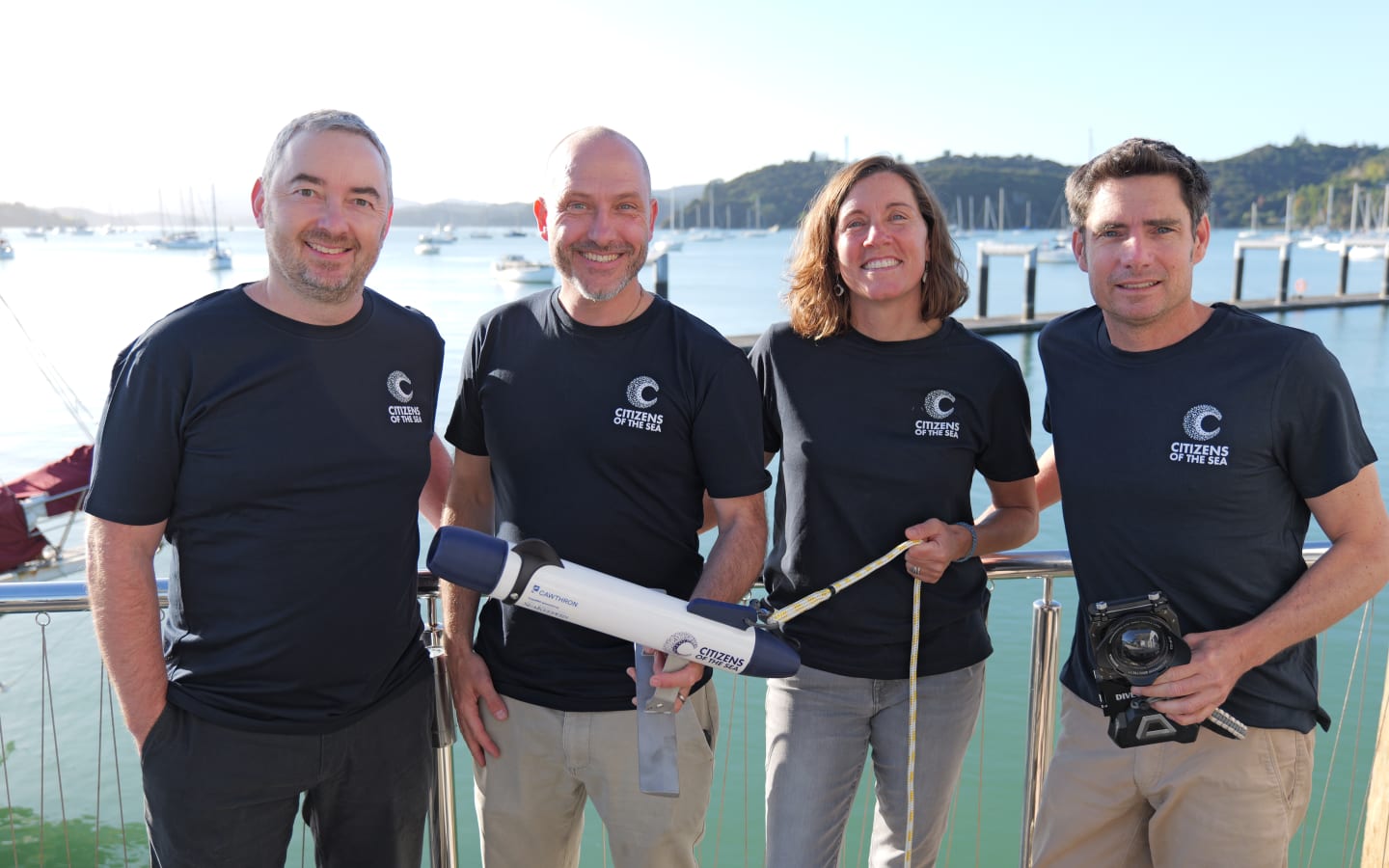
New Zealand Geographic and the Cawthron Institute have launched Citizens of the Sea, which aims to map the health and biodiversity of the Pacific at a larger scale than before. Evgeny Glazov of Illumina Dr Xavier Pochon of Cawthron Institute Erin Bomati of Citizens of the Sea and James Frankham of New Zealand Geographic. Photo: Citizens of the Sea
Pochon compared the process to scanning groceries at the supermarket.
"You can do that with the DNA signatures that you recover through this process. And that's what allows you to help visualize and create a full catalog of marine life that is found in any particular sample.
"This is a really, really powerful technology, because it can be harnessed to track biodiversity shift in response to climate change, for example; it can identify conservation hotspots, or also to the reverse, it can identify regions that are more stressed by the changing climate, or by pollution gradients in coastal areas.
"And it can also monitor the health of our oceans."
He said there's a large data gap in the Pacific Ocean.
"We need more data; we need to showcase this data in ways that everyone can really understand.
"And then with that, we will go then with a top-notch group of scientists doing the best science out there, to inform our politicians and possibly change policies to protect our oceans."
James Frankham from NZ Geographic said by using volunteering sailors as citizen scientists, and new tools, they are able to separate gathering the data from analysing it.
He said that allows them to stretch science into the big unknown of the Pacific.
Frankham said what's in the water is significantly different in the temperate waters of New Zealand, than in the tropics.
He said sailing from Opua in the Bay of Islands for instance, as the Pacific Rally is, to Fiji or Tonga, creates a straight line between temperate and tropical waters.
"That allows us to sample the water all the way up and then all the way back again.
"We create kind of a barcode of the ocean because we can see the different things that live in that water by the DNA traces they leave behind. It's called e-DNA.
"So if we can understand that barcode, we can go back next year and see how that barcode changes form one year to the next."
